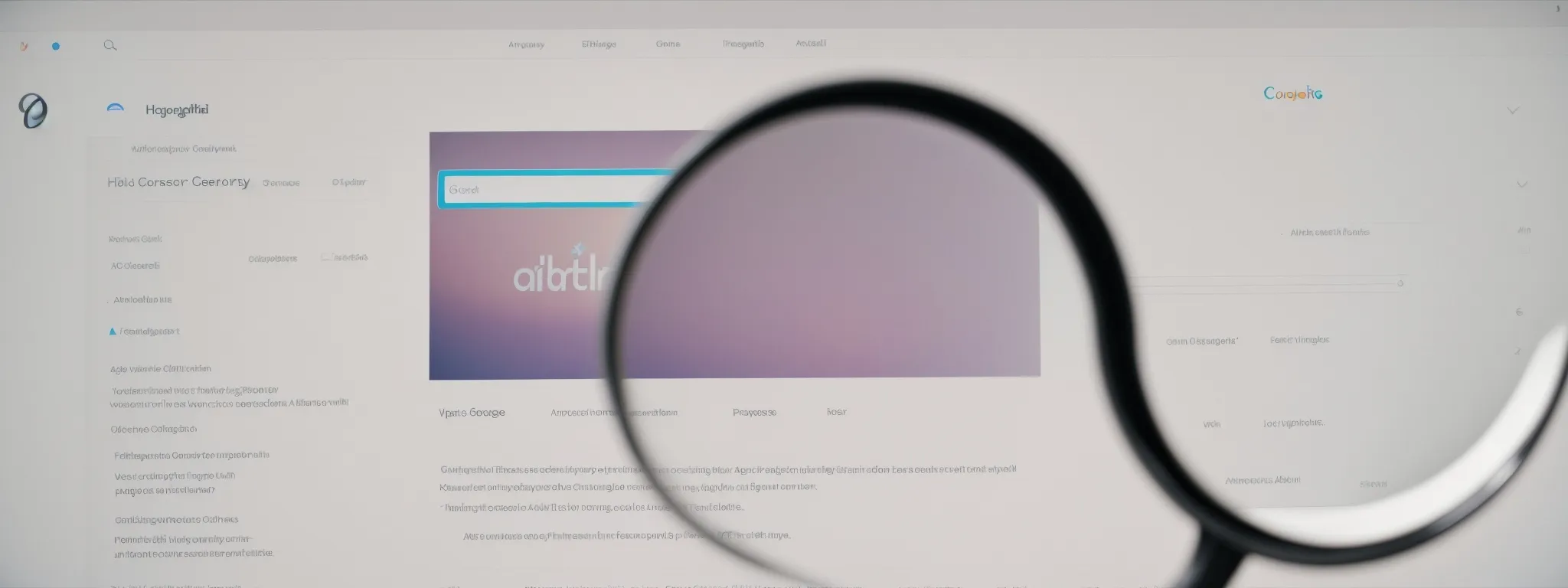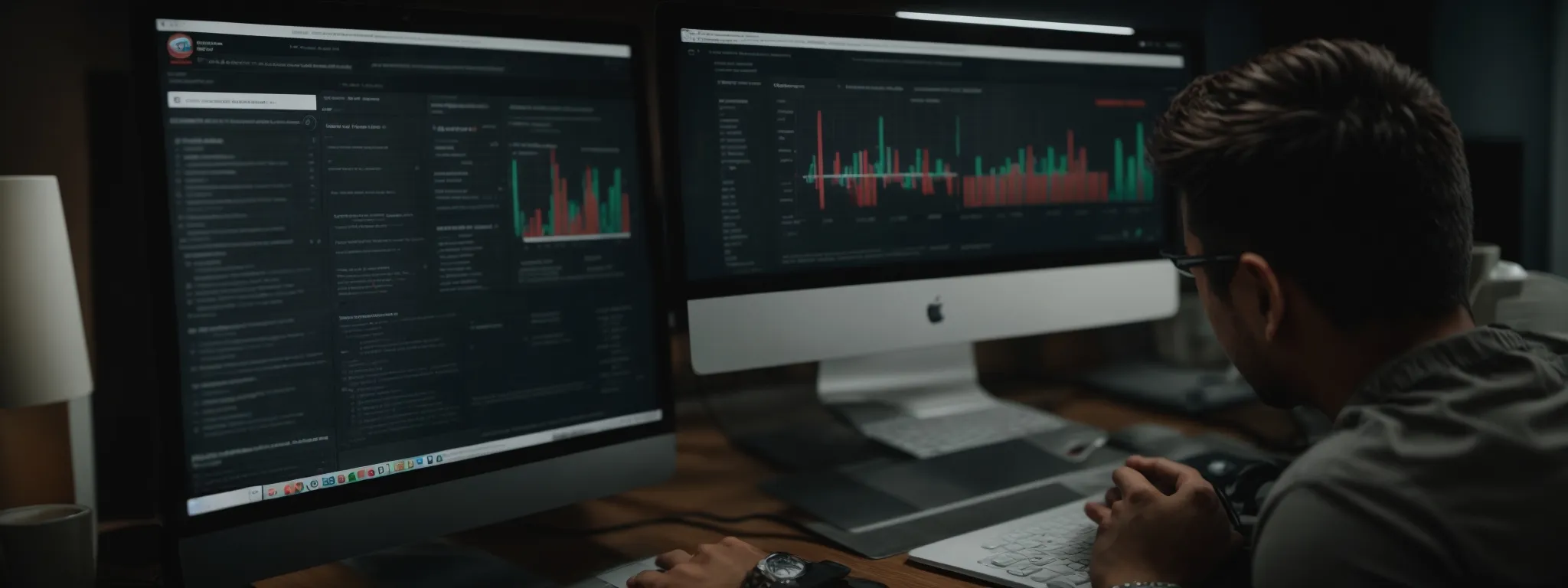SEO Acronym
Decoding SEO Acronym: A Simplified Explanation The term “SEO” stands as a beacon in the vast expanse of digital marketing, signaling a strategic approach to enhancing the […]
Decoding SEO Acronym: A Simplified Explanation
The term “SEO” stands as a beacon in the vast expanse of digital marketing, signaling a strategic approach to enhancing the visibility of a website within search engines.
This acronym, representing Search Engine Optimization, encompasses a multitude of techniques and methodologies aimed at propelling websites to the forefront of digital discovery.
Vital for businesses aiming to capture the essence of their target audience’s search intent, SEO acts as the cornerstone of a robust online presence.
It’s an intricate dance of on-page optimization, quality content creation, and authoritative link building—all designed to align with the ever-evolving algorithms of search engines.
Expanding one’s understanding of SEO is crucial for any enterprise looking to thrive online; thus, keep reading to unlock the subtleties of SEO and how LinkGraph’s SEO services propel you to the apex of online searchability.
Key Takeaways
- SEO Consists of on-Page, Off-Page, and Technical Components Each Essential for a Comprehensive Strategy
- Link Building Is Crucial for Establishing a Website’s Domain Authority and Enhancing Its SERP Ranking
- Content Quality Is Pivotal for Both User Engagement and Satisfying Search Engine Algorithms
- Continuous Learning in SEO Practices Is Necessary Due to the Ever-Evolving Nature of Search Algorithms and User Behavior
- Integrating a Strong Call to Action Within SEO Strategies Can Significantly Boost User Engagement and Conversion Rates
Unveiling the Meaning Behind the SEO Acronym

At the heart of digital visibility lies the enigmatic trio of letters: SEO.
An acronym that represents ‘Search Engine Optimization’, SEO is a cornerstone in the vast edifice of digital marketing.
Within its ambit, each letter contributes to a strategic framework essential for enhancing a website’s harmony with search algorithms.
This foundational concept upholds the relevance of aligning web content with the dynamic demands of search engines, ensuring that businesses resonate with their intended audience through organic search results.
Behind the terminology lies a historical evolution, mirroring the internet’s ascent and the critical role SEO plays in leading companies to the apex of digital interaction and customer engagement.
Understanding Each Letter of SEO
The lexicon of digital marketing is replete with shorthand, yet few terms hold the significance of SEO: a symphony of elements working in concert to elevate digital presence. Each of the three letters encapsulates a distinct yet interconnected aspect of this intricate process.
“S” stands for “Search,” the inception of the online voyage where queries commence and user intent is revealed. “E” embodies “Engine,” the complex mechanism that filters and organizes content, ranking it according to relevance and quality. Finally, “O” signifies “Optimization,” the meticulous craft of tailoring web properties to the rhythms of search algorithms and user expectations.
| SEO Component | Definition | Impact |
|---|---|---|
| Search | Initiation of online inquiry | Understanding user intent |
| Engine | Content filtering mechanism | Ranking websites by relevance |
| Optimization | Tailoring to search algorithms | Enhancing user experience and visibility |
The Roots of SEO in Digital Marketing
The digital landscape has experienced an extraordinary transformation with the advent of search engine optimization. Tracing its roots, SEO stemmed from the early recognition that search engines are the gatekeepers to online visibility, orchestrating the flow of information and prioritizing content that best aligns with user inquiries.
As the digital sphere has matured, SEO has grown from a novel marketing strategy to an indispensable tool for businesses. It is intertwined with the development of search engines themselves, evolving from rudimentary keyword stuffing to sophisticated strategies that engage with a range of on-page and off-page factors:
- Growth of search engines as primary navigators to web content
- Progression from simple algorithms to advanced machine learning
- Shift from single-keyword focus to comprehensive content relevance
Why Search Engine Optimization Is a Fitting Term
The term ‘Search Engine Optimization’ aptly captures the essence of increasing a website’s discoverability and performance within search engine listings. It encapsulates the strategic process that seeks to improve how websites are understood and prioritized by search algorithms, thereby propelling them toward the top of search engine result pages (SERPs).
SEO, as a term, acknowledges the intricate interplay between the vast, automated decision-making of search engines and the meticulous enhancements implemented by webmasters. By optimizing a website’s structure, content, and authority signals, businesses ensure that their digital presence is both visible and appealing to their target demographic in the organic search results.
How SEO Became a Digital Marketing Staple

As businesses launched into the digital frontier, the significance of SEO in establishing an online presence became undeniable.
This blend of art and science has consistently adapted, paralleling the sophistication of search engine algorithms.
By considering the pivotal moments in the development of SEO, one gains insight into its resilience as a marketing discipline and its ability to nimbly evolve alongside the mechanisms that govern online searchability.
A Brief History of SEO in Online Business
The nascent stages of online business coincided with the seminal days of SEO, where the focus was predominantly on inserting keywords and backlinks with scant regard for content quality or user experience. As businesses flocked to the internet, the ones early to grasp the significance of SEO gained an unprecedented competitive edge, establishing digital dominance that would set the benchmark for future strategies.
Following the initial phase, pioneers in the realm of online commerce soon recognized the intricate relationship between search engine algorithms and the online visibility of businesses. This realization spurred investments in SEO expertise, where LinkGraph emerged as an architect, honing methodologies that would align websites with the intricate criteria search engines use to rank digital content.
SEO Evolving With Search Engine Algorithms
The trajectory of SEO has been one of perpetual advancement, mirroring the relentless innovation of search engine algorithms. As these algorithms have progressed into more nuanced and context-aware systems, SEO strategies have simultaneously matured, with professionals like LinkGraph leading the charge in integrating deeper layers of semantic analysis and user experience optimization into their offerings.
LinkGraph has astutely navigated the complexities of algorithm updates, ensuring its strategies remain at the forefront of SEO best practices. Their continuous adaptation underscores an unwavering commitment to refining The Collaborative Dance Between Websites and Search Engine Criteria, thereby delivering sustained visibility and relevance in the SERPs for their clients.
Breaking Down the Components of SEO

Within the realm of search engine optimization, three primary elements – on-page, off-page, and technical SEO – form the tripartite pillars essential for a robust SEO strategy.
On-page factors encompass the optimization of content and meta tags to amplify relevance for target keywords, while off-page optimization focuses on cultivating domain authority through strategic link building.
Technical SEO addresses the website’s foundation, ensuring that the back-end structure facilitates smooth crawling and indexing by search engines.
Together, these components interlace to create an SEO tapestry where the meticulous selection and utilization of keywords, coupled with the pursuit of superior content quality, lay the groundwork for improved search rankings and user engagement.
Exploring on-Page, Off-Page, and Technical SEO
In the tapestry of SEO, on-page optimization stands as a pivotal segment where content relevance and meta-data alignment with search intent are paramount. It is within this arena that LinkGraph crafts a Meticulous SEO Content Strategy, enhancing H1 tags and focus keywords that search engines crave, while concurrently enriching the user’s search experience.
Off-page and technical SEO comprise the unseen sinews of a website’s search engine standing, where LinkGraph’s white-label link building garners trusted backlinks and domain authority, a silent yet potent force in elevating SERP rankings. Meanwhile, technical SEO fine-tunes a site’s architecture, from hypertext transfer protocol to asynchronous javascript, ensuring a seamless navigation for both search engines and users, laying the infrastructure for an unassailable digital presence.
The Critical Role of Keywords in SEO
Keywords serve as the navigational beacons guiding search engines towards a website’s content, signifying the quintessential elements to which optimization efforts are anchored. For businesses, the adept manipulation of keywords through strategic placement and density within web pages acts as a critical leverage point, influencing how prominently a page ranks in response to a user’s search query.
LinkGraph recognizes the pivotal importance of keywords in shaping the SEO landscape, meticulously infusing these terms into the content creation process to harness their full potential. With their profound understanding of keyword research and latent semantic analysis, they bolster client websites, ensuring each page is intricately optimized to meet the precise needs of search engines and their users.
Content Quality and Its Impact on SEO
Content quality transcends mere aesthetics to become a linchpin for SEO efficacy. Search engines, like seasoned connoisseurs, discern the value of web content by its relevance, accuracy, and the engagement it elicits from visitors: intricacies that LinkGraph deftly weaves into each client’s SEO strategy.
High-caliber content not only satisfies the searcher’s quest for information but also signals to search engines the site’s credibility and worthiness of a top position on the SERP. LinkGraph’s conviction in producing premium content is echoed in the palpable improvements in their clients’ organic search results and audience retention.
| SEO Aspect | Content Quality Factor | Impact on SEO |
|---|---|---|
| Relevance | Alignment with user intent | Increased engagement and SERP positioning |
| Authority | Expert insight and trusted sources | Elevation of domain and page authority |
| Engagement | Interactive and compelling material | Improved metrics on user behavior and dwell time |
SEO Acronym in Action: Applied Strategies

Embarking on the journey of search engine optimization is not simply about understanding its components, but about actively engaging in strategies that culminate in the elevation of a brand’s digital prominence.
At this juncture, practitioners are tasked with implementing the acronym ‘SEO’ through methodical actions, optimizing each dimension to forge strong connections with both the audience and the search engines guiding them.
From crafting content that resonates with latent user needs to establishing robust networks of backlinks that cement a site’s authority, the execution of SEO must be precise and deliberate.
Furthermore, a meticulous approach to tracking metrics grants businesses the insight to navigate the evolving tides of SEO efficacy.
Within this context, a comprehensive strategy entailing content creation, link acquisition, and data analysis serves as the blueprint for success in the competitive arena of online searchability.
Crafting Content With SEO in Mind
Crafting content with SEO in mind is a meticulous endeavor where every word serves a purpose, every sentence a strategy. The aim is to deliver quality material that resonates with the target audience and aligns precisely with what the search engines deem valuable.
In this intricate construction of text, LinkGraph Employs a Nuanced Balance of keyword-centric narratives woven with insightful context. Their commitment ensures that every paragraph contributes not only to the reader’s understanding but also to the content’s search engine relevance:
| SEO Content Element | Focus | Outcome |
|---|---|---|
| Keyword Integration | Strategic placement within content | Precision in matching user search queries |
| Contextual Relevance | Content depth and quality | Enhanced authority and search engine trust |
| User Engagement | Informative and engaging narrative | Longer dwell times and reduced bounce rates |
Link Building as a Pillar of SEO Practice
Link building emerges as a cornerstone within the edifice of SEO practice, providing the essential conduits through which a website’s domain authority is fortified and its prominence in search engine rankings is advanced. LinkGraph applies a refined, white-label link building approach, ensuring that each acquired backlink serves as a vote of confidence from reputable sources, thus contributing to a website’s stature in the meticulous eyes of search algorithms.
Effective link building strategies transcend the simplistic accumulation of hyperlinks and delve into the realm of relationship building and strategic partnerships. Acknowledging the multifaceted nature of such tactics, LinkGraph positions its SEO practice to craft bespoke link acquisition campaigns, fostering connections that not only enhance SERP visibility but also pave the way for sustainable growth and industry authority.
Tracking Your Progress With SEO Metrics
Measuring the efficacy of an SEO campaign is integral for businesses to fine-tune their digital strategies. Through LinkGraph’s Sophisticated Analysis, clients gain access to robust SEO metrics that deliver clear insights into performance, tracking everything from keyword rankings to organic traffic patterns and conversion rates.
LinkGraph’s Advanced Reporting Tools provide a granular view of a website’s SEO performance, enabling informed decisions on future tactics. Such comprehensive data analysis empowers clients to quantify the impact of their SEO investments, paving the way for ongoing optimization and strategic refinement.
The Implications of SEO for Modern Business

In today’s digital era, SEO transcends mere acronymic representation to become the very blueprint of a business’s online trajectory.
Expertly wielded, it sculpts the user experience and presides over the digital realm as a sovereign force, casting an enduring influence on brand visibility and online identity.
When businesses harness the power of SEO, they engage in a sophisticated form of communication with search engines and users alike, crafting pathways that lead not only to higher SERP placements but also to a resonant and enduring brand image.
How SEO Shapes User Experience
At the intersection of technical precision and artistic finesse, SEO has emerged as a defining force in sculpting the user experience on the web. Businesses adept in implementing sound search engine optimization tactics facilitate a smoother and more intuitive user journey, which leads to enhanced satisfaction and, ultimately, a stronger likelihood for conversion.
LinkGraph’s SEO services meticulously refine every aspect of a website’s interface and content to align with user behavior patterns and expectations. This transformative process ensures that visitors are greeted with relevance and quality from their initial interaction, thereby establishing a foundation of trust and fostering a positive user experience.
SEO’s Influence on Online Visibility and Branding
SEO acts as the lighthouse in the digital sea, guiding the online trajectory of a business towards greater visibility and distinct branding. Through mechanisms such as LinkGraph’s comprehensive SEO services, companies solidify their online presence, creating brand recognition that persists through the changing tides of the internet’s search landscape.
The mastery of search engine optimization crafts an indelible digital footprint, magnifying a brand’s message across the search engine market. Clients of LinkGraph experience this transformative effect, as tailored SEO strategies elevate their brand stature, ensuring that the audience’s first encounter with their brand is both prominent and positive.
Expanding Your Knowledge Beyond the SEO Acronym

Peeling back the layers of the search engine optimization acronym reveals a landscape rich with interconnected terminologies.
Central to this domain is the Search Engine Results Page (SERP), a nucleus of web traffic where Domain Authority (DA) and User Experience (UX) exert powerful influence on digital success.
LinkGraph’s expertise transcends the basic SEO vocabulary, venturing into the complex sphere where terms like Cost Per Lead (CPL) and Call To Action (CTA) hold sway, each playing a vital role in the harmonious interplay of SEO’s extended family of acronyms.
Professionals in this field acknowledge the critical importance of these concepts as they relentlessly pursue continuous learning to navigate the ever-evolving terrain of SEO.
Introduction to SERP, DA, and UX
An exploration into the intricacies of SEO quickly leads professionals to the core elements that impact digital prominence: the Search Engine Results Page (SERP), Domain Authority (DA), and User Experience (UX). SERP is the canvas upon which search results are painted, serving as a battleground for visibility where only the well-optimized thrive, while DA quantifies the trust and relevance of a website as gauged by search engines, reflecting its potential to rank favorably.
Personalizing the online journey, UX represents the aggregate of user interactions with a website, shaping perceptions and influencing behaviors. LinkGraph’s SEO services recognize the pivotal role of UX in SEO, refining websites to deliver seamless, user-centric experiences that facilitate not only satisfaction but also engagement, driving the metrics that matter in SERP standings and DA score elevations.
From CPL to CTA: SEO’s Extended Family of Acronyms
The acronyms within the realm of SEO embody a myriad of concepts that directly contribute to enhancing online prominence. Take, for instance, Cost Per Lead (CPL) which denotes the investment required to generate a potential customer – a metric deeply analyzed to ensure marketing strategies yield optimal ROI.
Similarly, the Call to Action (CTA) encapsulates those pivotal prompts that guide site visitors towards conversion – a vital component that intertwines with SEO to magnify the efficacy of digital content. LinkGraph champions the integration of compelling CTAs, optimizing them within the broader SEO landscape to bolster user engagement and drive conversions.
Continuous Learning in the Evolving Landscape of SEO
The landscape of SEO is in constant motion, steeped in an endless cycle of innovation and adaptation. Professionals within this field must therefore commit to lifelong learning to grasp the fluid algorithms and shifting user behavior patterns that define success in online visibility.
Pioneering entities like LinkGraph serve as beacons in this ongoing quest for knowledge, offering insights and services that encapsulate the cutting edge of SEO practices. Their expertise becomes a critical resource for businesses striving to remain relevant in the face of ever-changing digital marketing landscapes.
| SEO Tenet | Significance | Benefit of Continuous Learning |
|---|---|---|
| Algorithm Adaptation | Understanding search engine updates | Maintained visibility amidst shifts in ranking criteria |
| User Behavior Analysis | Insights into visitor engagement | Improved user experiences and tailored content strategies |
| Industry Trend Monitoring | Anticipation of market fluctuations | Agility in marketing approach to harness emerging opportunities |
Conclusion
Decoding the acronym “SEO,” or Search Engine Optimization, is crucial for businesses seeking online visibility and success.
SEO comprises strategic practices to align websites with search engine algorithms, ultimately enhancing user experience and organic search result rankings.
It’s an evolving discipline, adapting to the complexities of search engines and focusing on key components like on-page, off-page, and technical optimization.
SEO drives better user engagement, increases domain authority, and improves content relevance, thus amplifying a brand’s digital presence.
As the internet landscape changes, continuous learning in SEO is imperative for optimizing digital strategies and maintaining competitive edge.
Through a deep understanding of SEO, businesses can craft targeted content, build valuable backlinks, and analyze data to inform ongoing digital efforts, ensuring enduring online influence and success.














































































